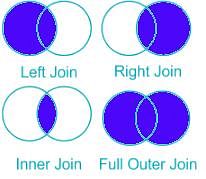Computer Science Engineering (CSE) Exam > Computer Science Engineering (CSE) Tests > Test: Joins Operations - Computer Science Engineering (CSE) MCQ
Test: Joins Operations - Computer Science Engineering (CSE) MCQ
Test Description
10 Questions MCQ Test - Test: Joins Operations
Test: Joins Operations for Computer Science Engineering (CSE) 2024 is part of Computer Science Engineering (CSE) preparation. The Test: Joins Operations questions and answers have been prepared
according to the Computer Science Engineering (CSE) exam syllabus.The Test: Joins Operations MCQs are made for Computer Science Engineering (CSE) 2024 Exam.
Find important definitions, questions, notes, meanings, examples, exercises, MCQs and online tests for Test: Joins Operations below.
Solutions of Test: Joins Operations questions in English are available as part of our course for Computer Science Engineering (CSE) & Test: Joins Operations solutions in
Hindi for Computer Science Engineering (CSE) course.
Download more important topics, notes, lectures and mock test series for Computer Science Engineering (CSE) Exam by signing up for free. Attempt Test: Joins Operations | 10 questions in 30 minutes | Mock test for Computer Science Engineering (CSE) preparation | Free important questions MCQ to study for Computer Science Engineering (CSE) Exam | Download free PDF with solutions
Test: Joins Operations - Question 1
Which view that contains more than one table in the top-level FROM clause of the SELECT statement:
Detailed Solution for Test: Joins Operations - Question 1
Test: Joins Operations - Question 2
Which join refers to join records from the write table that have no matching key in the left table are include in the result set:
Detailed Solution for Test: Joins Operations - Question 2
| 1 Crore+ students have signed up on EduRev. Have you? Download the App |
Test: Joins Operations - Question 3
Which product is returned in a join query have no join condition:
Detailed Solution for Test: Joins Operations - Question 3
Detailed Solution for Test: Joins Operations - Question 4
Test: Joins Operations - Question 5
A_____ is a query that retrieves rows from more than one table or view:
Detailed Solution for Test: Joins Operations - Question 5
Detailed Solution for Test: Joins Operations - Question 6
Detailed Solution for Test: Joins Operations - Question 7
Detailed Solution for Test: Joins Operations - Question 8
Test: Joins Operations - Question 9
Which oracle is the join condition is specified using the WHERE clause:
Detailed Solution for Test: Joins Operations - Question 9
Test: Joins Operations - Question 10
Which of the following Relational Algebra operations can be used when you want to keep all the tuples of the first relation irrespective of whether or not they have matching tuples in the second relation?
Detailed Solution for Test: Joins Operations - Question 10
Information about Test: Joins Operations Page
In this test you can find the Exam questions for Test: Joins Operations solved & explained in the simplest way possible.
Besides giving Questions and answers for Test: Joins Operations, EduRev gives you an ample number of Online tests for practice
Download as PDF


















